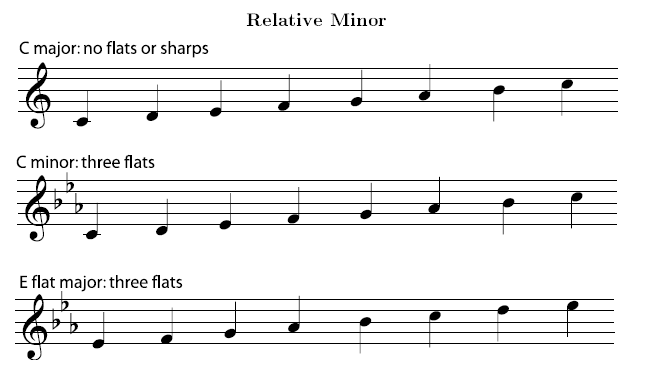Each minor key shares a key signature with a major key. A minor key is called the relative minor of the major key that has the same key signature. Even though they have the same key signature, a minor key and its relative major sound very different. They have different tonal centers, and each will feature melodies, harmonies, and chord progressions (Chords) built around their (different) tonal centers. In fact, certain strategic accidentalsare very useful in helping establish a strong tonal center in a minor key. These useful accidentals are featured in the melodic minorand harmonic minor scales.

It is easy to predict where the relative minor of a major key can be found. Notice that the pattern for minor scales overlaps the pattern for major scales. In other words, they are the same pattern starting in a different place. (If the patterns were very different, minor key signatures would not be the same as major key signatures.) The pattern for the minor scale starts a half step plus a whole step lower than the major scale pattern, so a relative minor is always three half steps lower than its relative major. For example, C minor has the same key signature as E flat major, since E flat is a minor third higher than C.

Exercise 4.7
What are the relative majors of the minor keys in the Figure 4.18 in Exercise 4.6?
- 7703 reads






